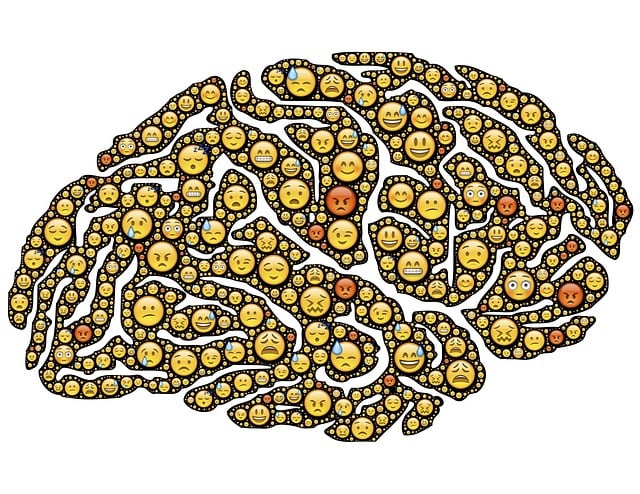Public awareness campaigns about mental health issues like conduct disorder are effective in promoting positive change. These initiatives break down stigma, encourage early intervention, and educate parents on seeking help for their children. By tailoring messages to specific demographics, such as age, gender, culture, and socioeconomic status, campaigns can be relevant and accessible. Engaging content through storytelling and visuals humanizes disorders and simplifies complex concepts. Combining traditional (radio, TV) and digital media channels increases reach. Evaluating campaign success through metrics like engagement and behavior changes is crucial for continuous improvement, including strategies like provider training and mental wellness exercises.
Public awareness campaigns play a pivotal role in shaping societal attitudes and behaviors, with significant impacts on various issues, including mental health. In this article, we explore the development of effective campaigns, focusing on Arvada Conduct Disorder Therapy as a case study. We’ll delve into understanding their purpose, identifying target audiences, crafting compelling content, leveraging media channels, and measuring success to ensure impactful outcomes. By integrating traditional and digital strategies, these campaigns can revolutionize public perception and foster positive change.
- Understanding Public Awareness Campaigns: Their Role and Impact
- Identifying Target Audiences for Effective Communication
- Designing Engaging Content: Strategies and Creative Techniques
- Leveraging Traditional and Digital Media Channels
- Measuring Success: Evaluation Metrics and Continuous Improvement
Understanding Public Awareness Campaigns: Their Role and Impact

Public awareness campaigns play a pivotal role in shaping societal perceptions and behaviors, acting as catalysts for positive change. These initiatives, designed to inform and educate communities, can significantly impact various aspects of public health and well-being. For instance, in the context of Arvada Conduct Disorder Therapy, awareness campaigns can break down stigma and encourage parents and caregivers to seek help for their children, fostering early intervention and improved outcomes. By providing valuable insights into behavioral issues and offering practical solutions, these campaigns empower individuals to make informed decisions regarding mental wellness.
The effectiveness of such initiatives extends beyond the immediate reach. They contribute to broader societal shifts, influencing policy changes and resource allocation. For healthcare providers, Burnout Prevention Strategies are often a direct outcome of heightened public awareness, leading to improved job satisfaction and patient care. Mood Management techniques and Mental Wellness promotion become more accessible when communities are educated about their importance, ultimately fostering resilient individuals capable of navigating life’s challenges.
Identifying Target Audiences for Effective Communication

Identifying target audiences is a crucial step in designing effective public awareness campaigns about mental health issues, such as conduct disorder. Understanding the unique needs and challenges faced by different demographics allows for tailored messaging and strategies that resonate with each group. For instance, campaigns aimed at parents in Arvada, Colorado, might focus on recognizing warning signs of conduct disorders in children and providing resources for early intervention. On the other hand, initiatives targeting adolescents could emphasize developing inner strength and emotional regulation skills to prevent or manage such disorders.
By considering factors like age, gender, cultural background, and socioeconomic status, campaign developers can ensure their messages are relevant and accessible. This precision enables effective communication that fosters mental health education and empowers individuals with the tools they need to support themselves or their loved ones. Incorporating strategies like engaging visuals, relatable narratives, and easy-to-understand language further enhances the impact of these campaigns, ultimately contributing to improved access to Arvada conduct disorder therapy and better overall mental health outcomes.
Designing Engaging Content: Strategies and Creative Techniques

Designing engaging content is a powerful tool in public awareness campaigns, especially when addressing sensitive topics like mental health issues. For instance, Arvada Conduct Disorder Therapy can benefit greatly from creative strategies that capture and retain audience attention. One effective technique involves storytelling—weaving narratives that personally connect with individuals’ experiences. This approach humanizes complex disorders, fostering empathy and understanding. By sharing real-life stories of recovery and resilience building, campaigns can challenge the mental illness stigma reduction efforts while providing valuable insights into effective therapy methods.
Visuals play a significant role in content creation too. Infographics, compelling photographs, and videos can simplify intricate concepts, making them more accessible. Incorporating these elements strategically ensures that messages are not only understood but also memorable. Moreover, integrating interactive components like quizzes or virtual reality simulations can actively engage audiences, encouraging participation in mental health discussions. When crafting such content, it’s crucial to consider the target audience, ensuring the language and tone align with their needs and cultural contexts while promoting open conversations about risk management planning for mental health professionals.
Leveraging Traditional and Digital Media Channels

In public awareness campaigns development, leveraging traditional and digital media channels is a strategic move that amplifies reach and impact. Traditional media platforms like radio, television, and newspapers remain powerful tools for conveying essential messages to diverse audiences, especially in areas with limited digital access. For instance, Arvada Conduct Disorder Therapy can benefit from television spots and community radio broadcasts to target families and caregivers.
At the same time, digital media offers unprecedented opportunities for real-time interaction and precise targeting. Online platforms allow for the creation of dynamic content that engages younger audiences and those more comfortable with digital environments. Digital channels also facilitate feedback mechanisms, enabling campaign organizers to adapt messages and strategies in response to community needs. For example, a well-designed social media campaign or website dedicated to Burnout Prevention can reach a broad spectrum of individuals seeking support, while a Community Outreach Program Implementation could effectively utilize these platforms for follow-up interactions and fostering ongoing engagement.
Measuring Success: Evaluation Metrics and Continuous Improvement

Evaluating the success of public awareness campaigns is paramount to understanding their impact and identifying areas for improvement. Metrics such as reach, engagement, and changes in behavior or attitudes are crucial indicators. By tracking how many people are exposed to the campaign and measuring their level of interaction—whether through clicks, shares, or comments—organizers gain insights into the audience’s response. Moreover, qualitative assessments, like surveys and feedback forms, provide deeper insight into public perception shifts related to issues like Arvada Conduct Disorder Therapy.
Continuous improvement is fostered when campaign organizers analyze both positive outcomes and areas of weakness. Incorporating strategies like Healthcare Provider Cultural Competency Training and Confidence Boosting exercises in the planning phase can enhance the program’s effectiveness. For instance, Mental Wellness Journaling Exercise Guidance might be used to encourage individuals to reflect on their mental health and share their experiences, thereby amplifying the campaign’s reach and impact.
Public awareness campaigns play a pivotal role in educating communities, fostering understanding, and driving positive change. By employing strategic communication methods, such as those discussed for Arvada Conduct Disorder Therapy, organizations can effectively reach diverse audiences. From tailored content design to the utilization of both traditional and digital media, each element contributes to a comprehensive approach. Measuring success through evaluation metrics ensures these campaigns remain impactful and adaptable. Implementing these best practices enables better connection with communities, ultimately enhancing societal well-being.














